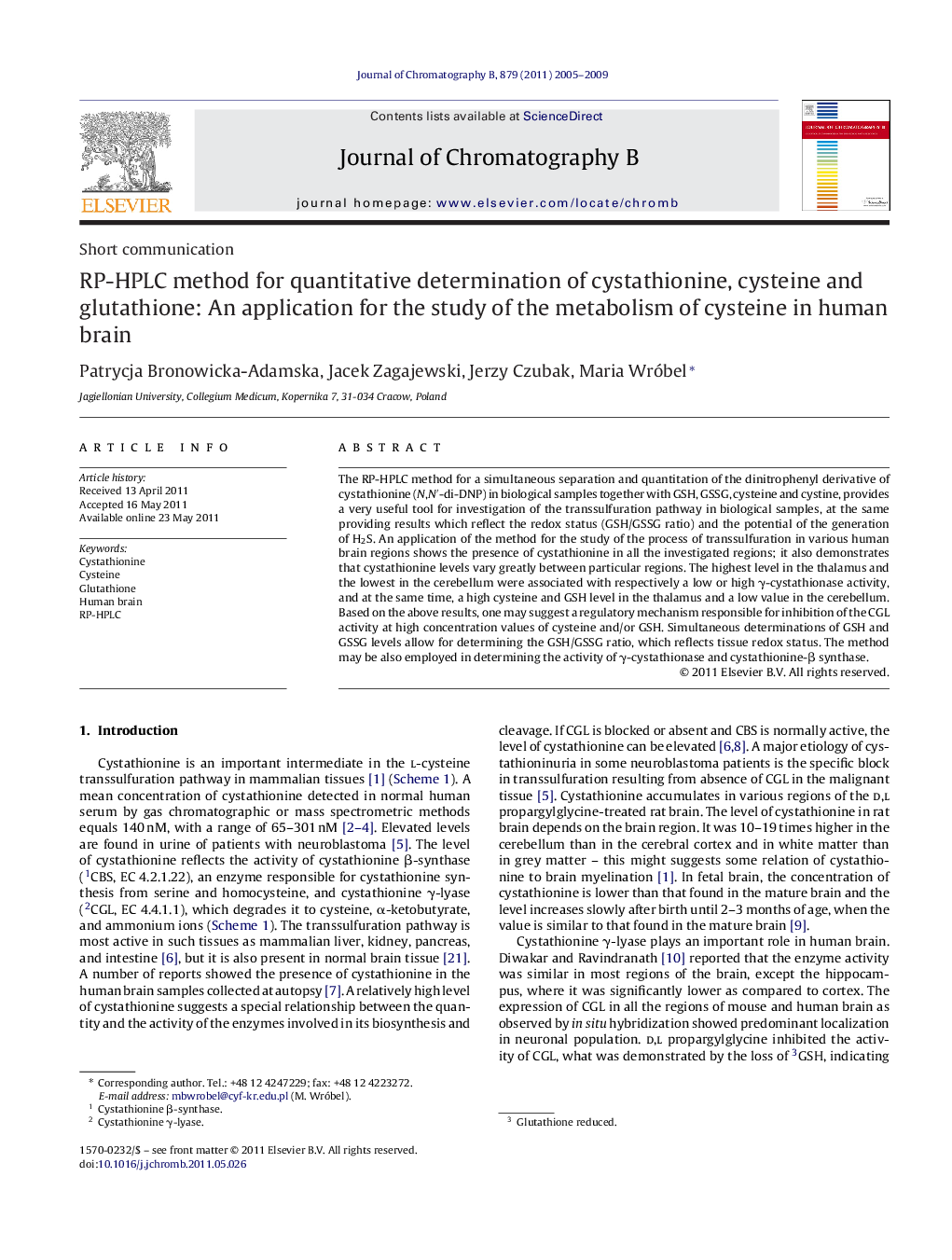| Article ID | Journal | Published Year | Pages | File Type |
|---|---|---|---|---|
| 1217314 | Journal of Chromatography B | 2009 | 5 Pages |
The RP-HPLC method for a simultaneous separation and quantitation of the dinitrophenyl derivative of cystathionine (N,N′-di-DNP) in biological samples together with GSH, GSSG, cysteine and cystine, provides a very useful tool for investigation of the transsulfuration pathway in biological samples, at the same providing results which reflect the redox status (GSH/GSSG ratio) and the potential of the generation of H2S. An application of the method for the study of the process of transsulfuration in various human brain regions shows the presence of cystathionine in all the investigated regions; it also demonstrates that cystathionine levels vary greatly between particular regions. The highest level in the thalamus and the lowest in the cerebellum were associated with respectively a low or high γ-cystathionase activity, and at the same time, a high cysteine and GSH level in the thalamus and a low value in the cerebellum. Based on the above results, one may suggest a regulatory mechanism responsible for inhibition of the CGL activity at high concentration values of cysteine and/or GSH. Simultaneous determinations of GSH and GSSG levels allow for determining the GSH/GSSG ratio, which reflects tissue redox status. The method may be also employed in determining the activity of γ-cystathionase and cystathionine-β synthase.
